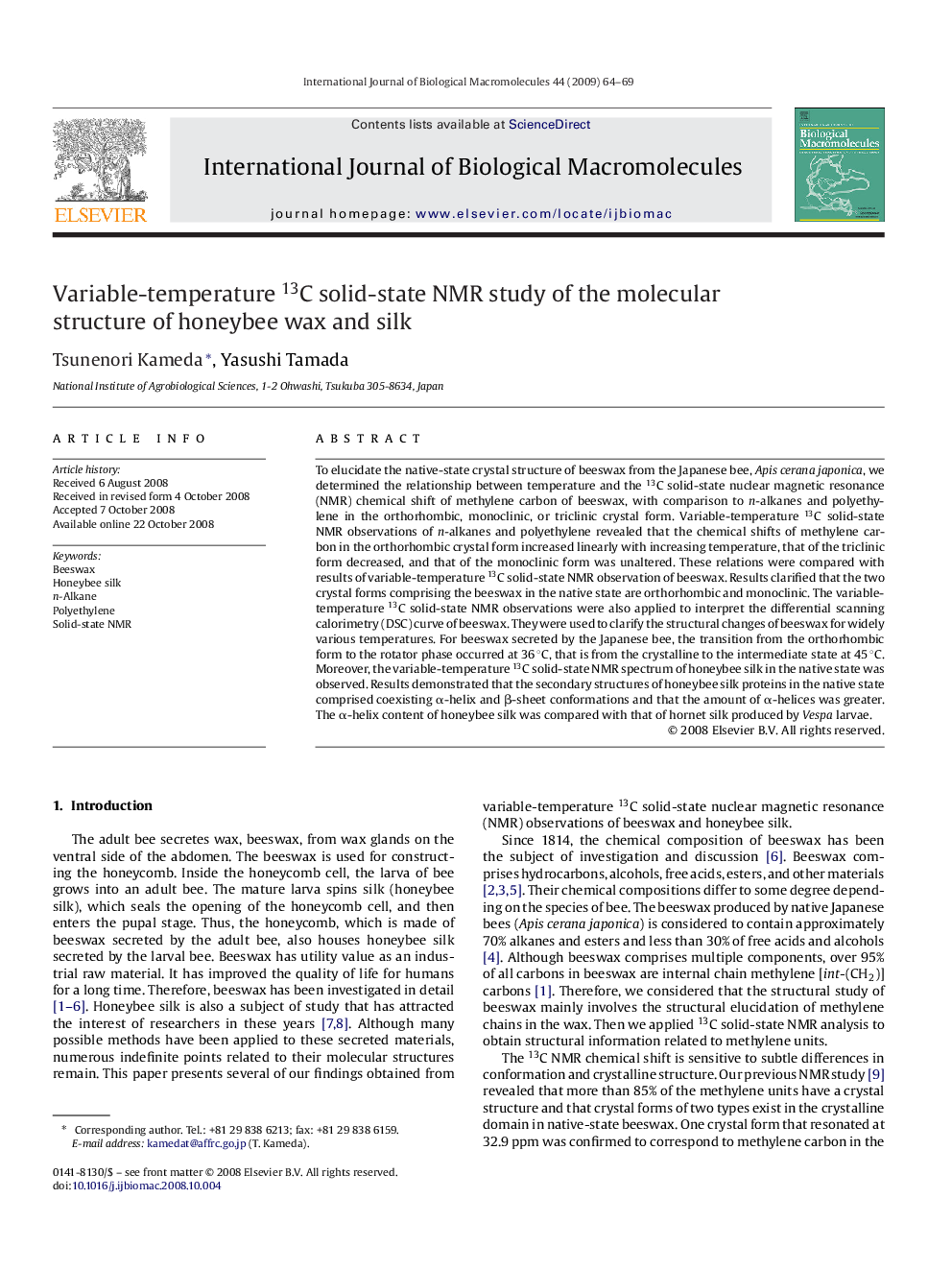| کد مقاله | کد نشریه | سال انتشار | مقاله انگلیسی | نسخه تمام متن |
|---|---|---|---|---|
| 1987630 | 1540307 | 2009 | 6 صفحه PDF | دانلود رایگان |

To elucidate the native-state crystal structure of beeswax from the Japanese bee, Apis cerana japonica, we determined the relationship between temperature and the 13C solid-state nuclear magnetic resonance (NMR) chemical shift of methylene carbon of beeswax, with comparison to n-alkanes and polyethylene in the orthorhombic, monoclinic, or triclinic crystal form. Variable-temperature 13C solid-state NMR observations of n-alkanes and polyethylene revealed that the chemical shifts of methylene carbon in the orthorhombic crystal form increased linearly with increasing temperature, that of the triclinic form decreased, and that of the monoclinic form was unaltered. These relations were compared with results of variable-temperature 13C solid-state NMR observation of beeswax. Results clarified that the two crystal forms comprising the beeswax in the native state are orthorhombic and monoclinic. The variable-temperature 13C solid-state NMR observations were also applied to interpret the differential scanning calorimetry (DSC) curve of beeswax. They were used to clarify the structural changes of beeswax for widely various temperatures. For beeswax secreted by the Japanese bee, the transition from the orthorhombic form to the rotator phase occurred at 36 °C, that is from the crystalline to the intermediate state at 45 °C. Moreover, the variable-temperature 13C solid-state NMR spectrum of honeybee silk in the native state was observed. Results demonstrated that the secondary structures of honeybee silk proteins in the native state comprised coexisting α-helix and β-sheet conformations and that the amount of α-helices was greater. The α-helix content of honeybee silk was compared with that of hornet silk produced by Vespa larvae.
Journal: International Journal of Biological Macromolecules - Volume 44, Issue 1, 1 January 2009, Pages 64–69